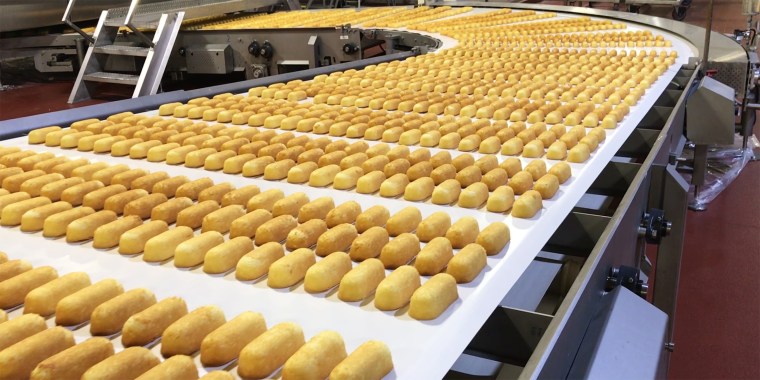A mummified Twinkie has become tasty Twitter fare after a pair of scientists shared a detailed thread about their research onto the snack.
First reported by NPR, the snack experiment began on Oct. 8 after a man named Colin Purrington discovered an eight-year-old box of Twinkies in his basement. Purrington said on Twitter that some of the cakes in the box appeared untouched, while one had clearly aged and appeared to have sucked in air from its packaging. Purrington said that he was sending the snack cakes off to the lab for closer analysis.
That scientific process was detailed in a long thread written by Matt Kasson, Ph.D., an associate professor of forest pathology at West Virginia University in Morgantown. Kasson's research focuses on various types of fungi.
"We have a new terrifying mycology project called Operation #MoldyTwinkie," Kasson wrote. "(Brian Lovett, Ph.D.) & I will ID an unknown fungus or fungi growing inside individually wrapped 8-year-old expired Hostess Snacks Twinkies."
The thread started with a sample. Kasson said that the snack cake, which was gnarled and gray and barely resembled a Twinkie at all, was "challenging" to work with, but he and Lovett, who also studies fungi at West Virginia University, were able to use a bone marrow biopsy tool to take a sample.
A second Twinkie, this one with just a slight growth on it, was also sampled.
Kasson told NPR that from the second Twinkie, the pair was able to grow a species of mold called Cladosporium, which Kasson says "one of the most common, airborne, indoor molds worldwide." However, the more mummified sample has yet to grow anything.
Kasson posted a comparison photo of the samples to Twitter. The samples from the slightly-affected Twinkie show clear growth, while there's little progress on the samples from the other snack.
"It may be that we don't have any living spores despite this wonderful, rare event that we've witnessed," Lovett told NPR. "Spores certainly die, and depending on the fungus, they can die very quickly."
While the experiment may not have yielded any results or information about the malformed Twinkie, Kasson shared plenty of close-up photos on Twitter.
In one picture, it appeared that the snack cake still had a slightly soft center.
In a video, Lovett and Kasson cut into the less-damaged Twinkie and found that the creamy interior was perfectly preserved.
TODAY Food reached out to Hostess for a comment about the phenomenon, but has not received a response.
The experiment rebuts the popular theory that Twinkies never go bad. While the snack cakes have a shelf life of 45 days, many fans of the sweet treat joked about buying a lifetime supply when they nearly went off the shelves forever in 2013. Purrington even said on Twitter that he bought his now-famous box of Twinkies in 2012 because he feared the snack cakes would never be available again. While the company did shut down production for eight months, it was restored in the spring of 2013.
Kasson noted on Twitter that he had heard plenty of stories of long-lasting Twinkies that didn't grow anything and remained "asymptomatic" despite having been purchased years earlier.
"Old basements might not be the best storage location for snack cakes," he said.
